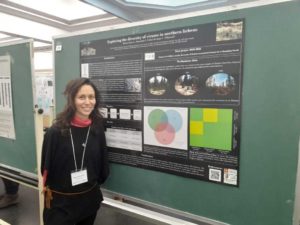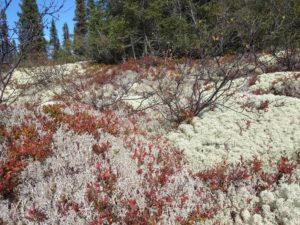Dr. Marta Alonso García is again looking at the biology and symbiosis of reindeer lichens. Why lichens are so important in the boreal forest ? Lichens cover nearly 7% of the earth’s surface and in eastern Canada, lichen woodlands occupy over 300,000 km2. Reindeer lichens (genus Cladonia), are the main component of lichen woodlands and they play a crucial role in boreal forest ecology. She studies, for the first time, the bacterial community of four species of reindeer lichens from eastern North America’s boreal forests. Using the 16S rRNA gene and she characterized the bacterial community of 189 lichen samples.

She’s found that host-lichen identity does not determine bacterial community composition and structure in reindeer lichens, but we confirm the influence of geography in shaping the diversity and abundance of bacteria associated to Cladonia stellaris. She also reveals that reindeer lichens share a reduced common core bacteria composed exclusively by Alphaproteobacteria. Northern lichen woodlands exhibit a significantly higher diversity and abundance of bacteria associated to Cladonia stellaris than southern lichen woodlands. The presence of the species Methylorosula polaris in the core bacteria is evident and may have a particular importance for reindeer lichens. She highlights the presence of the phylum Eremiobacterota (formerly known as WPS-2), an anoxygenic phototropic bacteria.
Our laboratory is further exploring in detail the symbiosis and systematic of reindeer lichens! If interested, please contact us !
Alonso García, M. & J.C. Villarreal. 2022. Bacterial community of reindeer lichens differs between northern and southern lichen woodlands. Canadian Journal of Forest Research • 18 January 2022 • https://doi.org/10.1139/cjfr-2021-0272